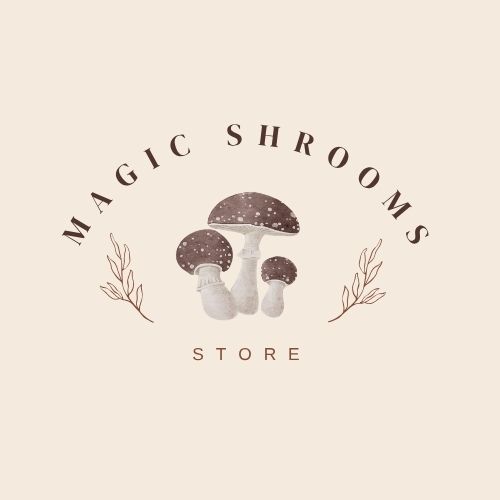Guide to Microdosing Psilocybin Mushrooms: Benefits, Risks & How to Get Started
Microdosing mushrooms has become one of the most talked-about wellness practices in recent years. By taking a sub-perceptual dose of psilocybin, many people report enhanced creativity, sharper focus, improved mood, and deeper emotional balance—all without the hallucinatory effects of a full psychedelic experience.
In this guide, you’ll learn:
What Is Microdosing Mushrooms?
Microdosing mushrooms means taking such a small amount of psilocybin that it stays below the threshold of perception. While you won’t feel “high,” you may notice:
- Improved focus and energy
- Enhanced creativity
- Better emotional balance
- Greater mind-body connection
Unlike full doses of psychedelics, microdosing is designed to integrate into your daily life without disrupting work, relationships, or responsibilities.
What Is Psilocybin?
Psilocybin is the naturally occurring psychoactive compound in over 200 mushroom species, often called magic mushrooms. Once consumed, psilocybin converts into psilocin, which affects brain activity and perception.
Common species include:
- Psilocybe cubensis
- Psilocybe semilanceata
- Psilocybe cyanescens
- Panaeolus cyanescens
- Psilocybe azurescens
How Does Microdosing Psilocybin Work?
Microdosing psilocybin appears to:
- Increase brain connectivity by forming new neural pathways
- Stimulate serotonin receptors (5-HT2A), boosting mood and creativity
- Enhance neuroplasticity via BDNF and glutamate production
- Reduce overactivity in the Default Mode Network (DMN) linked to anxiety and rumination
Unlike pharmaceutical antidepressants, which often numb emotions, microdosing mushrooms may help people face and reframe negative thought patterns, leading to lasting positive change.
Traditional Use of Psilocybin Mushrooms
- Evidence of use dates back to 10,000 BCE, with rock paintings in North Africa and Australia.
- Mayan and Aztec civilizations used mushrooms in spiritual and healing rituals.
- Western scientific interest began in the 1950s–60s, with Harvard studies showing benefits before psilocybin was banned in 1968.
Modern Psilocybin Research
Since the 1990s, studies have shown psilocybin’s potential for:
- Reducing depression and anxiety
- Supporting addiction recovery
- Enhancing creativity and cognition
- Providing spiritual insights
Books like The Psychedelic Explorer’s Guide by Dr. James Fadiman and podcasts with Tim Ferriss popularized microdosing as a structured wellness practice.
How to start Microdose Psilocybin Mushrooms
1. Microdosing Dosage
- Average: 1/20 to 1/10 of a regular dose
- Typical starting dose: 50mg (0.05g), then adjust gradually
2. When to Dose
- Best taken in the morning or early afternoon
- Avoid dosing late in the day to prevent sleep disturbances
3. Microdosing Schedules
- Fadiman Protocol: Dose every third day
- Stamets Protocol: Five days on, two days off
👉 Always allow rest days to avoid tolerance build-up.
4. Tips for Beginners
- Start with clear intentions
- Begin on a quiet day with no social obligations
- Keep a microdosing journal
- Follow a consistent schedule
Tracking Your Microdosing Experience
To get the most from microdosing, track changes in:
- Thoughts – clarity, focus, creativity
- Emotions – mood shifts, anxiety levels
- Social interactions – communication, empathy
- Physical awareness – body sensations, energy
- Outlook – hopefulness, presence, self-connection
Potential Benefits of Microdosing Mushrooms
Scientific research and user reports suggest microdosing psilocybin may help with:
- Depression & Anxiety Relief
- PTSD and Trauma Recovery
- OCD Symptom Reduction
- Breaking Addiction Cycles
- Migraine & Cluster Headache Relief
- Enhanced Creativity & Flow State
- Improved Exercise Motivation
- Menstrual & Hormonal Balance
- Spiritual Growth & Connection
Risks of Microdosing Psilocybin
While considered physiologically safe, risks include:
- Increased anxiety if dosage is too high
- Disrupted sleep or digestion in sensitive individuals
- Psychological dependency if overused
- Contraindications: psychotic disorders, autism spectrum, or colorblindness (per James Fadiman’s guidance)
Microdosing FAQ
Will I be tripping?
No. A microdose is sub-perceptual. If you feel psychedelic effects, your dose is too high.
Can I work while microdosing?
Yes. Microdosing is meant to be integrated into daily life without impairing function.
Is microdosing mushrooms illegal?
Laws vary by country. In most places, psilocybin is classified as a controlled substance. Always check your local regulations.
Can psilocybin be detected on drug tests?
Most standard tests do not screen for psilocybin, though it may show up in urine (up to 24 hours) or hair (up to 90 days).
Is microdosing safe long term?
Research is limited, but short-term studies show low risk and no evidence of toxicity or addiction.
